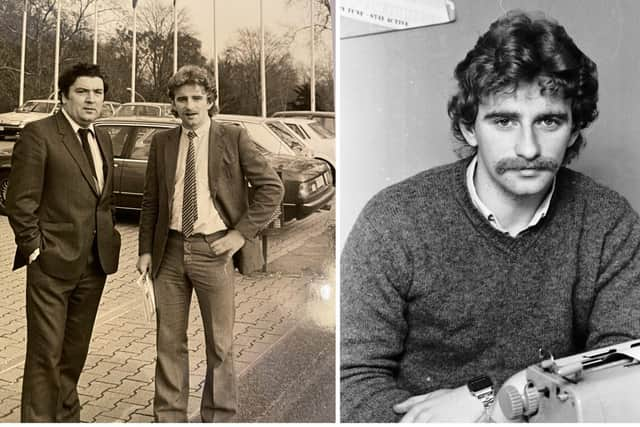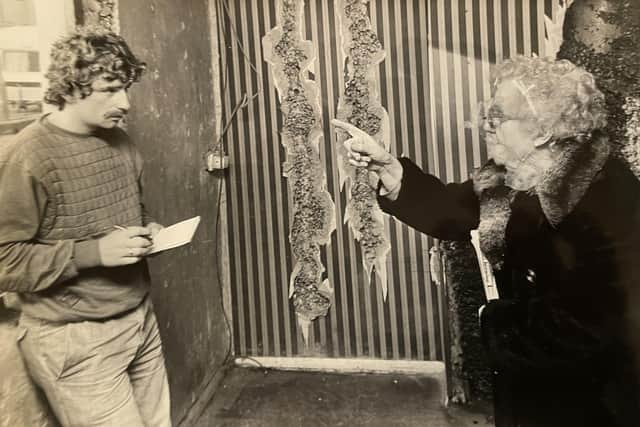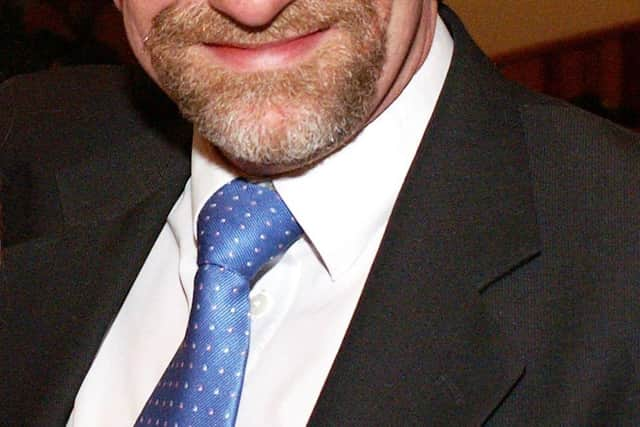DERRY JOURNAL 250: From the typewriter to the internet
and live on Freeview channel 276
My connection with the Derry Journal began with a call to MD Colm McCarroll from a phone box in Creeslough in 1980. I was spending the day cutting turf with my father and my longish blonde hair was matted with bits of bog. Luckily there was no Facetime in those days.
I was leaving folk music and heading back into journalism.
After a haircut and an interview at the Buncrana Road offices, I got a start. I was to work in the Journal’s Letterkenny office, but I began at Buncrana Road. I got a glimpse back into the long history of the Journal. For instance, Frank Curran was editor and had spent a lifetime at the paper, excelliing at political and sports reporting. ‘Big L’, chief photographer Larry Doherty, was one of the best-known people in Derry and Inishowen. He had covered everything from shootings and riots to feises and First Communions across the north-west.


Advertisement
Hide AdAdvertisement
Hide AdIn the newsroom there was the clatter of typewriters. Out ‘on the floor’, the compositors were working on early computers, turning news reports and adverts into strips of newspaper columns. The columns were cut and pasted onto big cardboard pages in the layout area. Somehow these pages were magically turned into newspapers by the giant press lurking at the back of this great room. It wasn’t really that much different from 1772. For a time I worked in the Letterkenny office, with Paddy Walsh, Paddy Stevenson and Eileen Blake. The Journal had a long history in Donegal. When my father was growing up in Creeslough in the 1930s, the Journal was the local paper. He used to read it out loud to the neighbours, putting in local names in the court cases.
Around 1982, I moved full-time into the Buncrana Road office. I was from Raphoe, just across the border, but still removed from the Troubles. I soon learned.
One of those murdered on Bloody Sunday in 1972, Willie McKinney, was a printer at the Journal. He was fondly remembered. Everyone was affected in some way by what was happening.
My guides to life in Derry included two talented Journal reporters, Domhnall MacDermott and Siobhan Quinn (later McEleney). Both died much too young – Domhnall in 1994 and Siobhan while deputy editor of the Journal in 2005.


Advertisement
Hide AdAdvertisement
Hide AdThe world’s attention was often on the North of Ireland, and on Derry at times. 1981, for instance, was the year of the hunger strikes.
Troubles-related stories, including murders and explosions, dominated our working lives and the headlines of the paper.
The Derry Journal was a major part of life in Derry and the North West. John Hume would be on the phone from London, Brussels or Washington. Martin McGuinness was a regular visitor to the office, as were other local politicians and representatives. The Journal’s coverage was seen as important, and tempers could sometimes get frayed when stories didn’t suit.
In 1989 I joined BBC Radio Foyle. I later moved to BBC NI in Belfast, staying long enough to see peace break out. I got back into newspaper journalism as editor of the Donegal Democrat in 2001. It was now owned by the Derry Journal, so I was back in Derry on print days, Monday and Wednesday.


Advertisement
Hide AdAdvertisement
Hide AdIn June 2006, I succeeded Pat McArt as a Donegal man editing the Derry Journal. Derry was a different city by then, mostly trying to move on after the Troubles. The Journal was heading into a different era as well, as online news and advertising became increasingly important. People were no longer relying so much on their local paper.
However, the Journal was still one of the top provincial papers on the island, with a team of more than twenty reporters and photographers. Some of those reporters began producing books of their own, including Claire Allan, Julieann Campbell, and Sean McLaughlin. Sean’s ‘Derry Journal: Lost Archives’ series of books highlighted the treasure trove that is the Journal’s archive of papers and photographs.
The regular columnists were exceptional as well – Eamonn McCann, Norman Hamill, Ken McCormack, Paul McFadden, Eddie Mahon and more. In fact, the Journal operation was at its busiest in its long history. For a time there were papers six times a week – the regular Journal on Tuesday and Friday; the Sunday Journal; Derry on Monday; and Foyle News on a Wednesday.
I finished as editor in 2014. I feel privileged to have played a part in the 250 history of the Derry Journal (and Londonderry Journal). For me, this personal link reflects the fact that Derry is properly the capital of Donegal.
Advertisement
Hide AdAdvertisement
Hide AdIn closing, I’d like to recall two of the great Journal reporters who I was lucky enough to meet, and whose association with the paper goes back a lot further than mine. One was Liam Conaghan, Newtowncunningham (‘Fear Feasa’), whose eloquence so impressed me when he visited our Raphoe music sessions in the 1970s. And the other was Cecil King, who got a world scoop when he met Amelia Earhart shortly after she landed in Derry on May 22nd, 1932, the first woman to fly solo across the Atlantic.
It was one of many notable days in the starred history of the Derry Journal.